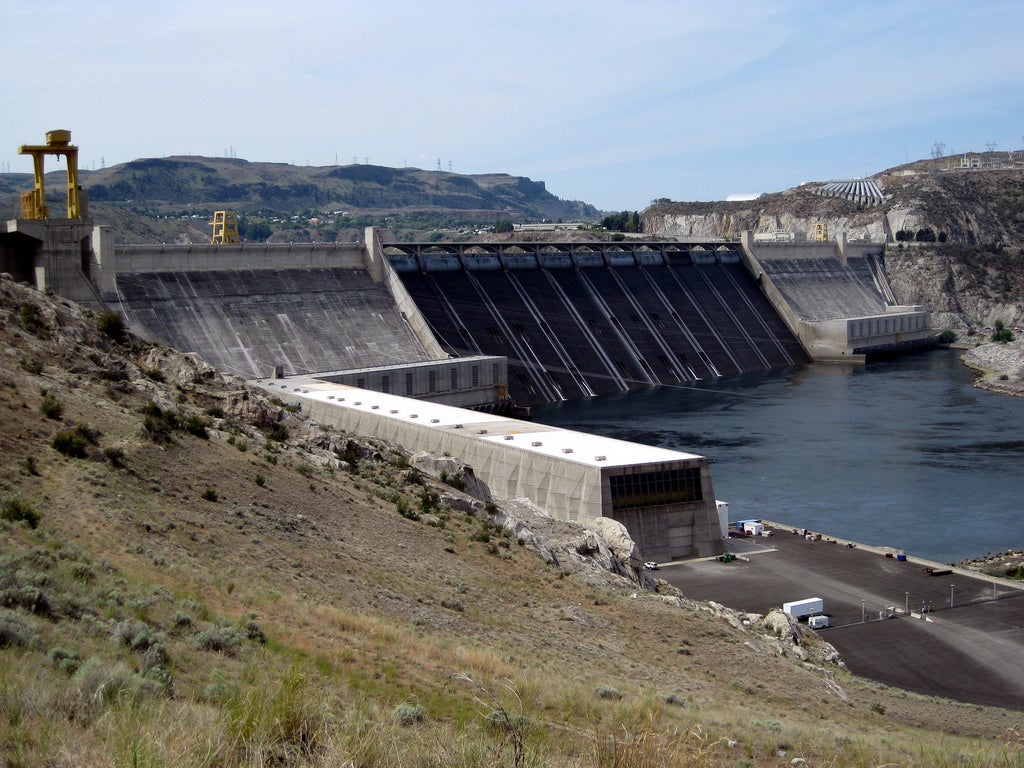
Grand Coulee Dam is described as being the lynchpin of the US Bureau of Reclamation’s Columbia Basin Project – a plan to irrigate arid land in the region that was conceived during the early 20th century.
Located on the Columbia River in Washington state, the project’s hydro generators are the main source of power for the Federal Columbia River Power System – a vital part of the national power grid.
The US Bureau of Reclamation recently announced plans to modernise three generators at its third power plant, with units G-19 through to G-21 to be replaced following the expiration of the their 30-year life expectancy.
Hydropower production from Grand Coulee’s 4200MW third power plant roughly equates to 18% of the Federal Columbia River Power System’s maximum output.
“This modernisation project in the third power plant will result in higher efficiency and reliability, ensuring another 40 years of service and enabling Reclamation to meet its contractual obligations for power generation,” said the facility’s deputy power manager Doug Anderson.
What is Grand Coulee Dam?
Grand Coulee Dam is a federally-owned, large scale and multipurpose facility, construction on which started in 1933 and finished in 1942.
The facility is 168m high and 1729m long, and impounds the river to a water surface approximately 107m above the old riverbed.
It was modified in the late 1960s with the addition of the third power plant, created by adding a 357m long, 61m high forebay dam along the right abutment at a 64-degree angle to the axis of the dam.
The turbines (units G19 through G24) that comprise the third power plant, one of the largest hydroeletric facilities of its kind in the US, were put in service in the mid-1970s.
Although it is less than 50 years old, Reclamation has determined Grand Coulee Dam to be eligible for the National Register of Historic Places due to its important architectural character and defining features.
Reclamation planning major overhaul
During previous refurbishment and overhaul of units G-22 to G-24, Reclamation learned the original plan to mechanically overhaul and refurbish Grand Coulee Dam would not accomplish the goals of ensuring reliability of the units for another 40 years or more.
In the end, more systems and components were replaced than originally had been planned, as they had more wear than expected and could not be refurbished or reused.
In addition, piping and electrical systems were found to have significant wear and needed replacement to ensure reliability.
Documented age-related wear at units G-19 to G-21 had highlighted various concerns.
There was potentially an increased risk of hardware failures and forced outages; more-challenging repairs due to obsolescence and lack of spare parts, higher operation and maintenance costs, and longer down times.
Hydraulic efficiency was low by current standards, and the turbines experience significant cavitation which requires lengthy service outages and frequent repairs.
Cavitation has also caused extensive damage to key and auxiliary components, such as the runners and bearings, and the damaged components in turn result in poor operational performance of the generating units.
New, modernised generators, turbines and auxiliary components would operate at a higher efficiency, experience less cavitation, and ensure another 40 years of reliable service.
Therefore, senior officials determined that modernisation and replacement, with the potential for full replacement of major unit systems, rather than refurbishment, would be necessary for G-19 through G-21.
Reclamation has identified the following objectives for the proposed action:
• At minimum, address damaged components, including the runners, shafts, stators, and wicket gates.
• Ensure that other ageing auxiliary components, such as headcovers, thrust brackets, top covers, and rotors would provide future dependability for 40 years or more.
• Address wear in various wiring, piping, and containment systems so that they function reliably and properly and do not cause any safety or environmental issues due to failure.
• Maintain operations within current parameters of hydrologic capacity to prevent impacts to water quality, hydrology, and fisheries resources.
Construction work is expected to begin at the third power plant as early as 2023.






